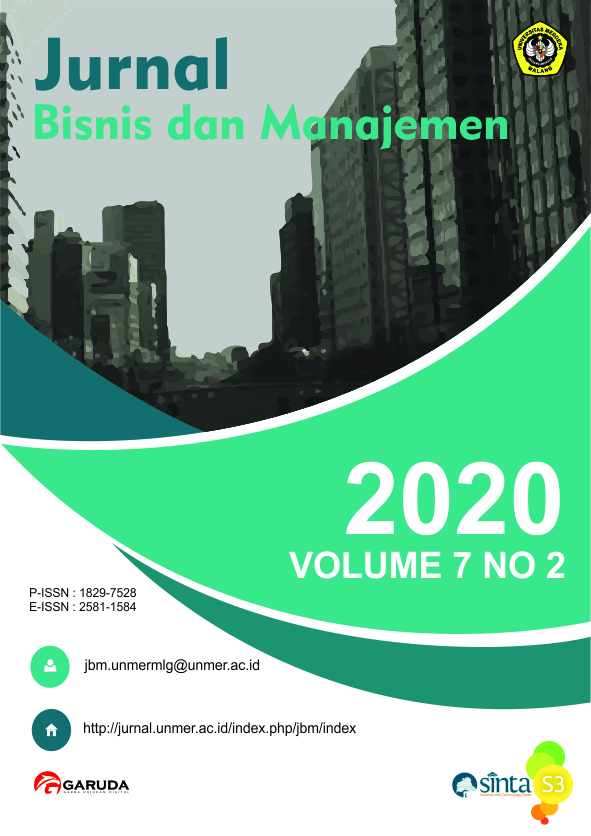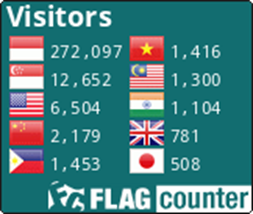NOVELTY SEEKING TO PREDICT BEHAVIOR INTENTION IN RURAL DESTINATION
DOI:
https://doi.org/10.26905/jbm.v7i2.4067Keywords:
Destination image, novelty-seeking, satisfaction, behavior intentionAbstract
Tourists’ perceptions of the destination image, novelty-seeking, tourist satisfaction, and behavior intention are vital for a successful destination marketing. The literature on travel and tourism reveals an abundance of studies on destination image, tourist satisfaction, and behavior intention even though their relationships with novelty-seeking have not been thoroughly investigated in the rural destination. Consequently, the aim of this study is to investigate the influence of destination image on novelty-seeking and satisfaction, which in turn affects the behavior intention of the tourist. The conceptual model was developed on the basis of theoretical and empirical research in the field of tourism; the empirical data were collected in a rural destination. A total of 380 questionnaires were returned and the data were analyzed by using SEM AMOS. Still, the theoretical and managerial implications were drawn based on the findings of the study. Several recommendations were also compiled for future studies.Downloads
References
Assaker, G., Vinzi, V.E. and O’Connor, P., 2011. Examining the effect of novelty seeking, satisfaction, and destination image on tourists’ return pattern: A two factor, non-linear latent growth model. Tourism Management, 32(4), pp.890–901
Assaker, Guy and Rob Hallak. 2013. Moderating Effects of Tourists’ Novelty-Seeking Tendencies on Destination Image, Visitor Satisfaction, and Short- and Long-Term Revisit Intentions, Journal of Travel Research 52(5), 600– 613
Assaker, G,2014, Examining a hierarchical model of Australia’s destination image, Journal of vacation marketing, 20(3), 195-210
Babu, P. G., and P. G. Bibin. 2004. Past Visits and the Intention to Revisit a Destination: Place Attachment as the Mediator and Novelty Seeking as the Moderator. Journal of Tourism Studies, 15: 51-66
Bagozzi, R. P. 1992. The self-regulation of attitudes, intentions and behavior. Social Psychology Quarterly, 55,178-204.
Baloglu, S., and McCleary, K. W. 1999. A model of destination image formation. Annals of Tourism Research, 26, 868–897
Barroso, C., E. Martin, and D. Martin. 2007. “The Influence of Market Heterogeneity on the Relationship between a Destina¬tion’s Image and Tourists’ Future Behavior.†Tourism Manage¬ment, 28: 175-87.
Beerli, A., and Martın, J. D. 2004. Factors influencing destination image. Annals of Tourism Research, 31(3), 657–681.
Bello, D.C. and Etzel, M.J. 1985. The Role of Novelty in the Pleasure Travel Experience. Journal of Travel Research, 24(1), pp.20–26
Bigne, J.E., Sanchez, M.I. and Sanchez, J.. 2001. Tourism image, evaluation variables and after purchase behaviour: inter-relationship. Tourism Management, 22, pp.607–616.
Bigne, J. E., M. I. Sanchez, and L. Andreu. 2009. “The Role of Variety Seeking in Short and Long Run Revisit Intentions in Holiday Destinations.†International Journal of Culture, Tour¬ism and Hospitality Research, 3: 103-15.
Bolton, R., and J. Drew. 1991. “A Multistage Model of Customer Assessment of Service Quality and Value.†Journal of Consumer Research, 17: 375-84.
Chen, C.-F., and Chen, F.-S. 2010. Experience quality, perceived value, satisfaction, and behavioral intentions for heritage tourists. Tourism Management, 31,29—35.
Chen, C.-F. and Phou, S.2013. A closer look at destination: Image, personality, relationship and loyalty. Tourism Management, 36, pp.269–278.
Chen, C.-F. and Tsai, D. 2007. How destination image and evaluative factors affect behavioral intentions? Tourism Management, 28(4), pp.1115–1122.
Cheng, Tien-Ming and Lu, Chiang-Chuan, 2015, Destination Image, Novelty, Hedonics, Perceived Value, and Revisiting Behavioral Intention for Island Tourism, Asia Pacific Journal of Tourism Research, 18:7, 766-783
Chi, C.G.-Q. and Qu, H. 2008. Examining the structural relationships of destination image, tourist satisfaction and destination loyalty: An integrated approach. Tourism Management, 29(4), pp.624–636.
Chou, Hsu-Jung. 2013. The Effect of the Visitor’s Consumption Experience and Tourism Image on Tourist Satisfaction and Revisit Intention of Taiwan’s Night Markets. International Journal on Business Review.Vol 3,no 1,Nov,pp 129-134
Cole, S.T; Crompton, J.L., and Willson, V.L. 2002. An empirical investigation of the relationships between service quality, satisfaction and behavioral intentions among visitors to a wildlife refuge. Journal of Leisure Research, 34(1), 1-24
Court, B., and Lupton, R. A. 1997. Customer portfolio development: modelling desti¬nation adopters, inactives and rejecters. Journal of Travel Research, 36(1), 35—43
Crompton, J.L., 1979. An Assessment of the Image of Mexico as a Vacation Destination and the Influence of Geographical Location Upon That Image. Journal of Travel Research, 17(4), pp.18–23.
Echtner,C.M and R. B. Ritchie,1991.The Meaning and Measurement of Destination Image, The Journal of Tourism Studies, vol. 2, no. 2, pp. 2-12.
Faison, E. (1977). The neglected variety drive: a useful concept for consumer behavior. Journal of Consumer Research, 4,172—175.
Fishbein and Ajzen. 1975. Belief, Attitude, Intentions and Behavior: an introduction to theory and research. California: Addison-Wesley Publishing Company, Inc
Gallarza, M.G., and Saura, I.G. 2006. Value Dimensions, Perceived Value, Satisfaction and Loyalty: An Investigation of University Students’ Travel Behaviour. Tourism Management, 27(3), 437-452.
GarcÃa, I. S., R. Pieters, M. Zeelenberg, and J. E. Bigné. 2012. When Satisfied Consumers Do Not Return: Variety Seeking’s Effect on Short- and Long-Term Intentions. Psychology and Marketing, 29: 15-24
Gartner, W. 1993. Image formation process. Journal of Travel and Tourism Marketing, 2(2/3), 191—215
Hebb, D. O., and W. R. Thompson. 1954. Handbook of Social Psychology. Reading, MA: Addison-Wesley.
Hunt, K, 1977, Conceptualizition and measurement of consumer satisfaction and dissastifaction, Cambridge, Marketing Science Institute
Hwang, H.; Malhotra, N. K.; Kim, Y.; Tomiuk, M. A., and Hong, S.2010. A comparative study on parameter recovery of three approaches to structural equation modeling. Journal of Marketing research, 47(4), 699-712.
Jang, S. and Feng, R. 2007.Temporal destination revisit intention: the effects of novelty seeking and satisfaction, Tourism Management, Vol. 28, pp. 580-90.
Jin, Naehyun, Sangmook Lee and Hyuckgi Lee. 2013 : The Effect of Experience Quality on Perceived Value, Satisfaction, Image and Behavioral Intention of Water Park Patrons: New versus Repeat Visitors, International Journal of Tourism Research, 17:82–95 (2015)
Keaveney, S. M. 1995. Customer Switching Behaviour in Service Industries: An Exploratory Study. Journal of Marketing, 59 (April): 71-82
Khan, Abdul Highe; Ahasanul Haque and Muhammad Sabbir Rahman. 2013. What Makes Tourists Satisfied? An Empirical Study on Malaysian Islamic Tourist Destination, Middle-East Journal of Scientific Research 14 (12): 1631-1637
Kim,H and Richardson, s, 2003, Motion Picture Impact on Destination Image, Annal of Tourism Research, 30 (1), 216-237
Kotler, Haider, and Rein, 1993, Marketing place: Attracting investmen industry and tourism to cities, states and nations, New York,Free Press
Kozak, M., and M. Rimmington. 2000. Tourist Satisfaction with Mallorca, Spain, as an Off-Season Holiday Destination. Journal of Travel Research, 38: 260-69.
Lee, T.-H. and Crompton, J., 1992. Measuring Novelty In Tourism Seeking. . Annual Of Tourism Research, 19, pp.732–751.
Loureiro, Sandra Maria Correia,2014, The role of the rural tourism experience economy in place attachment and behavioral intentions, International Journal of Hospitality Management 40 (2014) 1–9
Mitchell, V. W.and Vassos, V. 1997. Perceived risk and risk reduction in holiday purchases: A cross-cultural and gender analysis. Journal of Euro-Marketing, 6(3), 47–79.
Mohamad, Mahadzirah; Nur Izzati Ab Ghani; Mustafa Mamat and Ibrahim Mamat.2014. Satisfaction as a Mediator to the Relationships Between Destination Image and Loyalty, World Applied Sciences Journal, 30 (9): 1113-1123.
Moon, Kae-Sung; Yong Jae Ko; Daniel P. Connaughton and Jeoung-Hak Lee. 2013. A mediating role of destination image in the relationship between event quality, perceived value, and behavioral intention, Journal of Sport & Tourism, 18:1, 49-66,
Munhurrun, P. Ramseook; V.N. Seebaluck, and P. Naidoo.2015. Examining the structural relationships of destination image,perceived value, tourist satisfaction and loyalty: case of Mauritius, Procedia - Social and Behavioral Sciences, 175 ( 2015) 252 – 259
Niininen, O., Szivas, E. and Riley, M., 2004. Destination loyalty and repeat behaviour: an application of optimum stimulation measurement. International Journal of Tourism Research, 6(6), pp.439–447.
Oliver, R. L. 1997. Satisfaction: To Behavioral Perspective on the Customer (New York, NY, USA.: McGraw-Hill).
Oliver, R., and J. Swan. 1989. Consumer Perceptions of Interpersonal Equity and Satisfaction in Transactions: A Field Survey Approach, Journal of Marketing, 53 (2), 21-35.
Osman, Zahir and Ilham Sentosa. 2013. A study of mediating effect of trust on customer satisfaction and customer loyalty relationship in Malaysian rural tourism, European Journal of Tourism Research 6(2), pp. 192-206.
Pearson, P. H. 1970. Relationship between global and specified measures of novelty seeking. Journal of Consulting and Clinical Psychology, 34,199—204
Pearce, P. L., Morrison, A., and Rutledge, J. 1998. Tourism: Bridges across continents. Sidney: McGraw-Hill.
Petrick, J.F., 2002. An examination of golf vacationers’ novelty. Annals of Tourism Research, 29(2), pp.384–400.
Pizam, A., Neuman, Y. and Reichel, A. 1978. Dimensions of tourist satisfaction with destination area, Annals of Tourism Research, Vol. 5 No. 3, pp. 314-322.
Pratminingsih, Sri Astuti ; Christina Lipuringtyas Rudatin and Tetty Rimenta. 2014. Roles of Motivation and Destination Image in Predicting Tourist Revisit Intention: A Case of Bandung – Indonesia, International Journal of Innovation, Management and Technology, Vol. 5, No. 1, February.
Prayag, G. 2009. Tourists’ Evaluations of Destination Image, Satisfaction, and Future Behavioral Intentions—the Case of Mauritius. Journal of Travel & Tourism Marketing, 26(8), pp.836–853.
Prayag, G., Hosany, S. and Odeh, K. 2013. The role of tourists’ emotional experiences and satisfaction in understanding behavioral intentions. Journal of Destination Marketing & Management, 2(2), pp.118–127.
Reichheld, F. 1993. Loyalty-Based Management. Harvard Business Review, 71: 64-73
Reichheld, F., and Sasser, W.E. 1990. Zero defections: quality comes to services. Harvard Business Review, 68, 105-111.
Royo-Vela, M., 2009. Rural-cultural excursion conceptualization: A local tourism marketing management model based on tourist destination image measurement. Tourism Management, 30(3), pp.419–428.
Silva, C., Kastenholz, E. dan Abrantes, J.L., 2013. Place-attachment, destination image and impacts of tourism in mountain destinations. Anatolia, 24(1), pp.17–29.
Sonmez, S., and Graefe, A. 1998. Influence of terrorism risk on foreign tourism decisions. Annals of Tourism Research, 25(1), 112–144.
Tang, Mei-Ling. 2014.Tourist Attraction, Satisfaction, and Behavioral Intention of Industrial Tourist: Economic Factors as Moderator, The Journal of International Management Studies, Volume 9 Number 2, August,
Tavitiyaman, Pimtong and Hailin Qu. 2014. Destination Image and Behavior Intention of Travelers to Thailand: the Moderating Effect of Perceived Risk, Journal of Travel & Tourism Marketing, 30:169–185
Wang, C. Y., and Hsu, M. K. 2010. The relationships of destination image, satisfaction, and behavioral intentions: An integrated model. Journal of Travel & Tourism Marketing, 27(8), 829–843.
Zuckerman, M. 1971. Dimensions of sensation seeking. Journal of Consulting and Clinical Psychology, 36,45–52.
Downloads
Published
How to Cite
Issue
Section
License
Authors who publish with this journal agree to the following terms:
(1) Copyright of the published articles will be transferred to the journal as the publisher of the manuscripts. Therefore, the author confirms that the copyright has been managed by the journal.
(2) Publisher of Jurnal Bisnis dan Manajemen is University of Merdeka Malang.
(3) The copyright follows Creative Commons Attribution–ShareAlike License (CC BY SA): This license allows to Share — copy and redistribute the material in any medium or format, Adapt — remix, transform, and build upon the material, for any purpose, even commercially.














